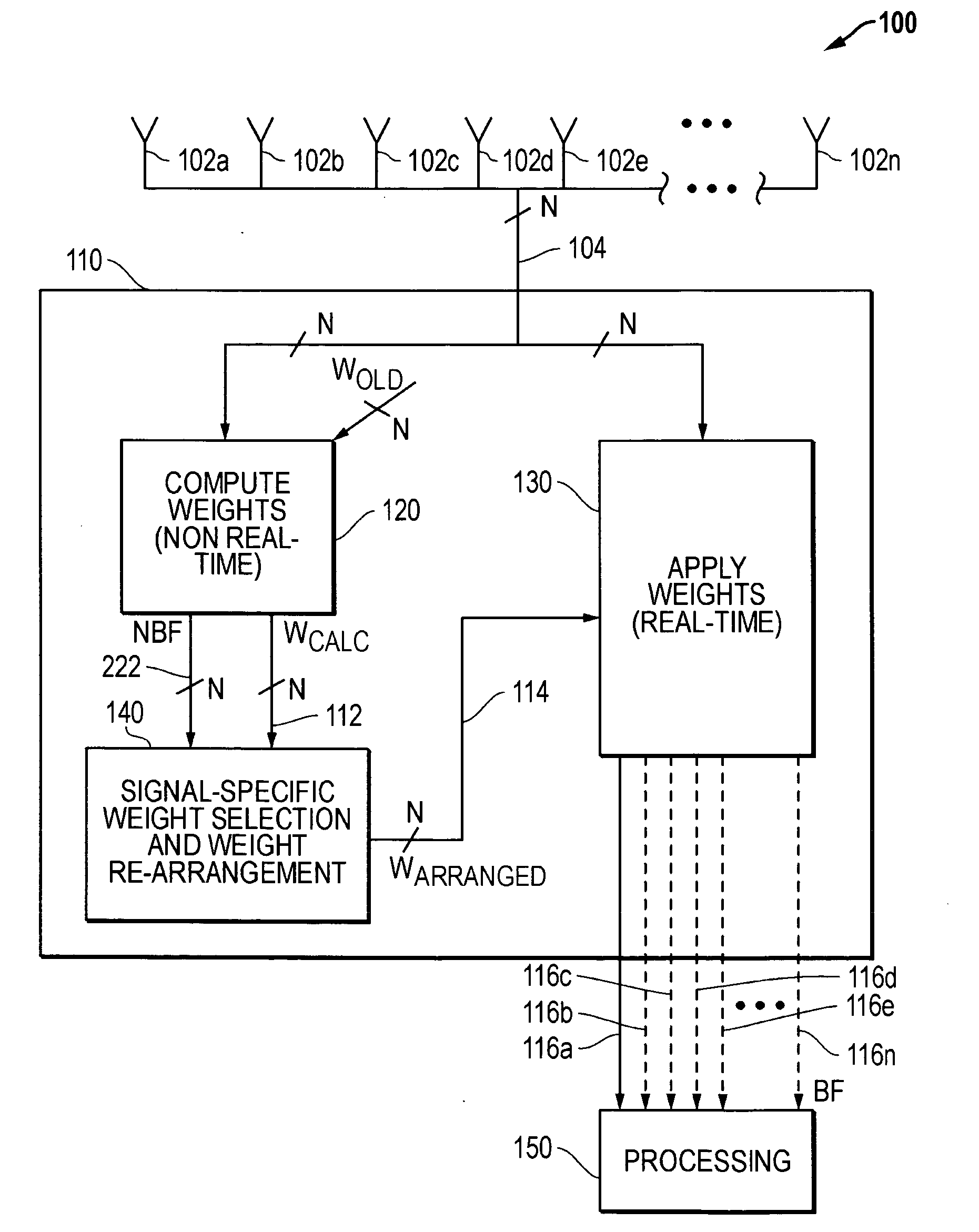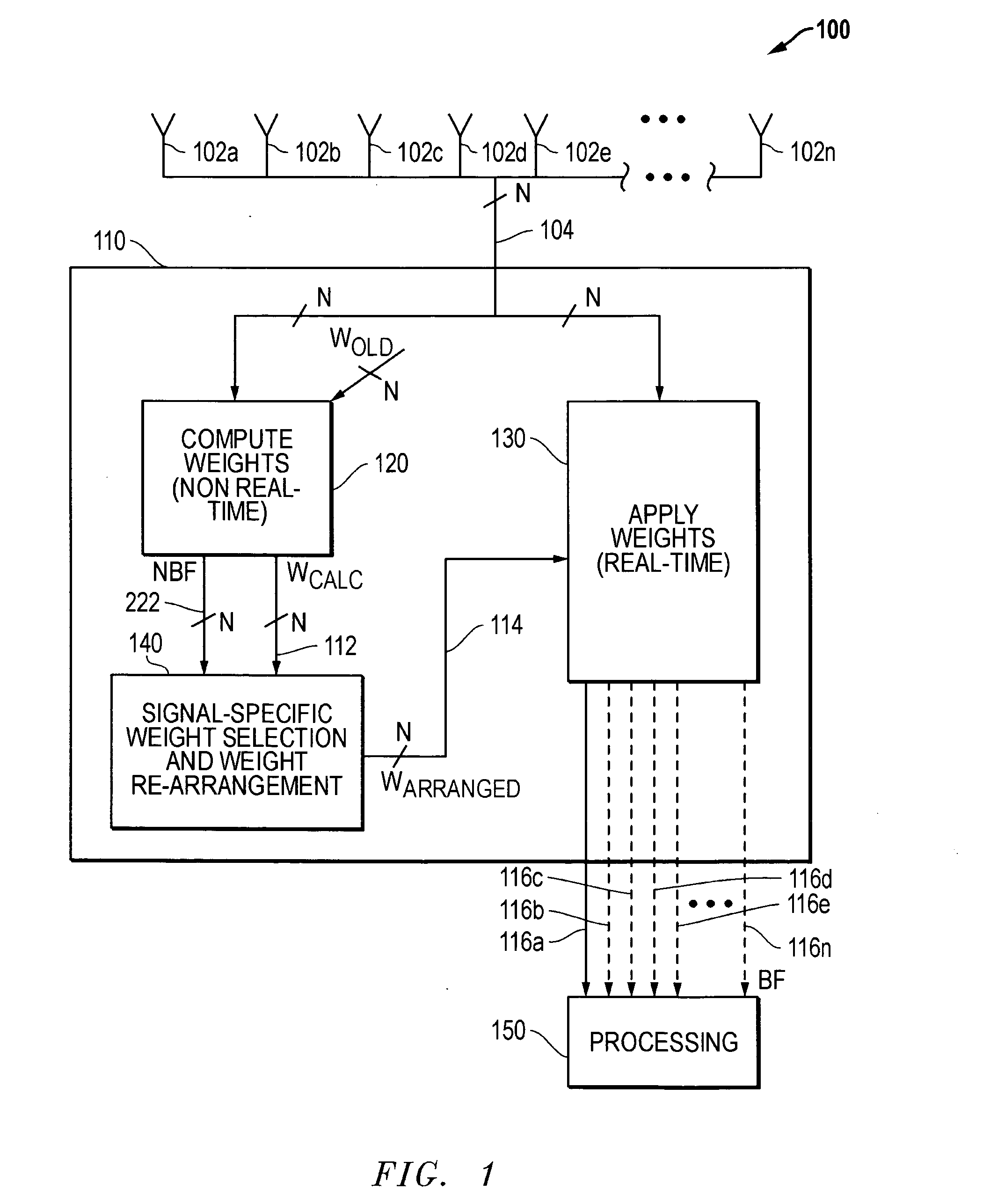Methods and systems for signal selection
a signal selection and signal technology, applied in the field of signal reception, can solve the problems of cochannel signal interference cochannel interference of airborne receivers,
- Summary
- Abstract
- Description
- Claims
- Application Information
AI Technical Summary
Benefits of technology
Problems solved by technology
Method used
Image
Examples
Embodiment Construction
[0023]FIG. 1 is a simplified block diagram of a signal selector in this embodiment provided in the form of a beamforming system 110. As illustrated in FIG. 1, beamforming system 110 is coupled to a signal source in the form of a spatial antenna array 100 made up of a number N of multiple antenna elements 102a through 102n. As shown, multiple antenna elements 102a through 102n of antenna array 100 are coupled to a corresponding number N input channels 104 of beamforming system 110. In this embodiment, the N received input channels 104 each containing the cochannel signals may include a modulated SOI (e.g., a modulated signal of FM or other modulation type that is emitted by a ocean-deployed sonobuouy or other modulated signal of interest) and a number of cochannel interferer signals. The function of the beamforming system 110 is to separate and individually output up to N cochannel signals on output channels 116a through 116n. Components of beamforming system 110 may be implemented u...
PUM
 Login to View More
Login to View More Abstract
Description
Claims
Application Information
 Login to View More
Login to View More - R&D
- Intellectual Property
- Life Sciences
- Materials
- Tech Scout
- Unparalleled Data Quality
- Higher Quality Content
- 60% Fewer Hallucinations
Browse by: Latest US Patents, China's latest patents, Technical Efficacy Thesaurus, Application Domain, Technology Topic, Popular Technical Reports.
© 2025 PatSnap. All rights reserved.Legal|Privacy policy|Modern Slavery Act Transparency Statement|Sitemap|About US| Contact US: help@patsnap.com



